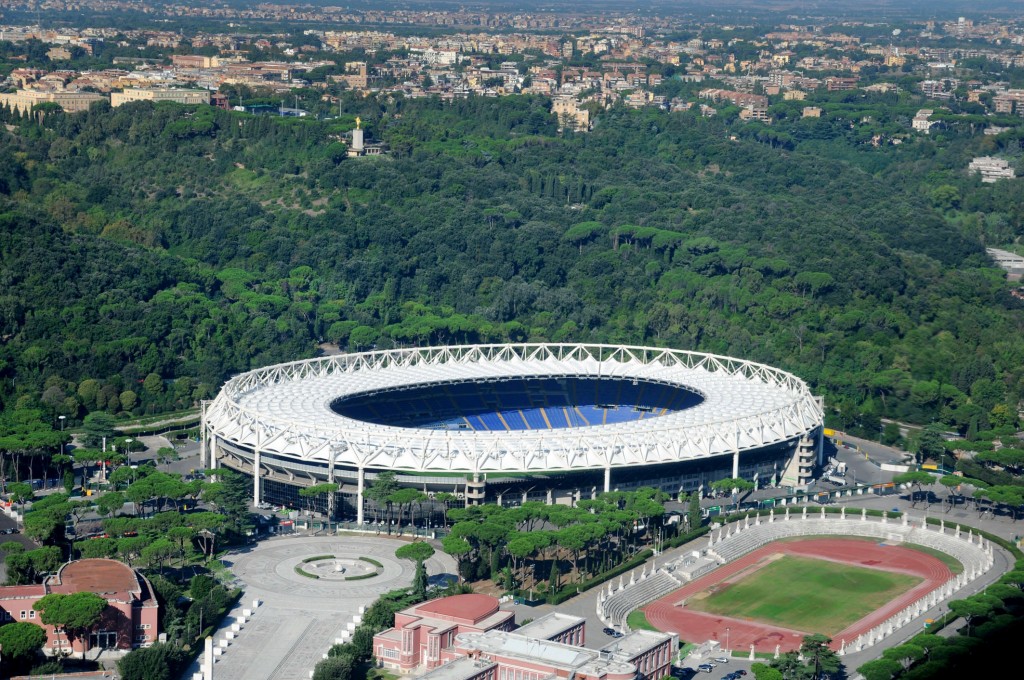The Histories of Architecture.Rome 1970-2015. Five seasons for the city

– for young people aged between 18 and 25 (not yet turned 25);
– for groups of 15 people or more;
– La Galleria Nazionale, Museo Ebraico di Roma ticket holders;
– upon presentation of ID card or badge: Accademia Costume & Moda, Accademia Fotografica, Biblioteche di Roma, Centro Sperimentale di Cinematografia, Enel (for badge holder and accompanying person), FAI Fondo Ambiente Italiano, Feltrinelli, Gruppo FS, IN/ARCH Istituto Nazionale di Architettura, Sapienza Università di Roma, LAZIOcrea, Palazzo delle Esposizioni, Amici di Palazzo Strozzi, Accademia Nazionale di Santa Cecilia, Scuola Internazionale di Comics, Teatro Olimpico, Teatro dell’Opera di Roma, Teatro di Roma, Università degli Studi di Roma Tor Vergata, Youthcard;
valid from August 1st to August 31st, upon presentation of an identity document verifying residency in the Lazio Region
valid for one year from the date of purchase
– minors under 18 years of age;
– myMAXXI cardholders;
– on your birthday presenting an identity document;
– upon presentation of EU Disability Card holders and or accompanying letter from hosting association/institution for: people with disabilities and accompanying person, people on the autistic spectrum and accompanying person, deaf people, people with cognitive disabilities and complex communication needs and their caregivers, people with serious illnesses and their caregivers, guests of first aid and anti-violence centres and accompanying operators, residents of therapeutic communities and accompanying operators;
– MiC employees;
– journalists who can prove their business activity;
– European Union tour guides and tour guides, licensed (ref. Circular n.20/2016 DG-Museums);
– 1 teacher for every 10 students;
– AMACI members;
– CIMAM International Committee for Museums and Collections of Modern Art members;
– ICOM members;
– from Tuesday to Friday (excluding holidays) European Union students and university researchers in art history and architecture, public fine arts academies (AFAM registered) students and Temple University Rome Campus students;
– IED Istituto Europeo di Design professors, NABA Nuova Accademia di Belle Arti professors, RUFA Rome University of Fine Arts professors;
– upon presentation of ID card or badge: Collezione Peggy Guggenheim a Venezia, Castello di Rivoli Museo d’Arte Contemporanea, Sotheby’s Preferred, MEP – Maison Européenne de la Photographie;
MAXXI’s Collection of Art and Architecture represents the founding element of the museum and defines its identity. Since October 2015, it has been on display with different arrangements of works.


18 Sep 2025 06.00 pm
books at MAXXIPiù turismo per tutti?by Edoardo Colombo and Paolo Verri
24 Sep 2025 05.00 pm
MAXXIperTUTTIIl Museo si raccontaguided tours in LIS
25 Sep 2025 07.00 pm
Le ConversazioniRoberto Andòwith Antonio Monda
26 Sep 2025 07.00 pm
musicThe Scoop Jazz Band Noi e lo stadio
1 Oct 2025 06.00 pm
books at MAXXISenza riparo. Sei tentativi di leggere il presenteby Guido Mazzoni
MAXXI Auditorium – admittance €5.00; admittance to 5 seminars €20; free for myMAXXI cardholders.
The purchase of a ticket allows for reduced price museum entrance (€8) within one week of issue.
Five lectures examining the urban and architectural history of modern and contemporary Rome from 1870 to the present day
45 years in the urban history of Rome divided into five temporal segments that roughly correspond to the decades by which they are spanned: in each of them we can identify themes, urban strategies and events that impacted on the forms of the architecture and the development of the city.
What are the themes that will characterise the city in the near future?
Piero Ostilio Rossi is a lecturer in Architectural and Urban Composition in the Faculty of Architecture of La Sapienza University and director of the Department of Architecture and Design. He is the author of Rome. Guida all’architettura moderna, Laterza, of which four editions have been published in 1984, 1991, 2000 and 2012 and Per la città di Roma. Mario Ridolfi urbanista 1944-1954 (Quodlibet, 2013). He has also contributed to Roma 1993-2003. Dieci anni di cambiamento (Donzelli, 2003) and Roma. La nuova Architettura (Electa, 2006). He was the coordinator of the study group that drew up the Investigation into the contemporary city for the “Quality Charter” of the 2008 Rome regulatory plan.
The Histories of Architecture. Lectures on Rome
27 February – 14 May 2016
The first edition of The Histories of Architecture: this year the series examines the transformations in the architecture of the capital from 1870 through to the present day.
Introductions by Margherita Guccione, director MAXXI Architettura.